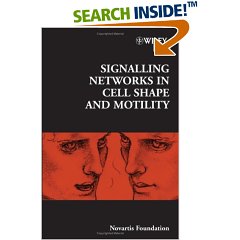Book Description
This book features contributions from experts in cell biology, genetics,
neurobiology, immunology and structural biology. The unifying element is that
they all study processes of cell shape change and motility. Several key
questions in this field of research are discussed:
What are the organising principles behind cell shape change?
Are there ‘master switches’ present in every cell type?
How are extracellular signals interpreted by the cell in order to activate
intracellular mechanisms?
What is the influence of the extracellular matrix on cell movement and internal
signalling pathways?
How do pathogens subvert cellular systems in order to stimulate or block their
uptake?
The book addresses all of these important questions. Data are presented on the
key proteins that regulate cell shape: the GTP binding proteins of the Rho
family. There are also extensive discussions of the potential applications of
the data to clinical problems, particularly that of cell motility in cancer.
From the Back Cover
Cells change their shape and by alternating their internal cytoskeleton. The
dynamics of the cytoskeletal structure underline these changes, thus the
signals that drive the changes must be interpreted by cellular machinery in
order to carry out the required remodelling. Until recently, it has been very
difficult to obtained detailed mechanistic information about these important
signalling processes.
Understanding the processes that regulate cell morphology is critical to
understanding complex biological questions such as cell migration during
embryonic development, axonal guidance, or the basis for metastasis of cancer
cells.
This book contains contributions from experts in cell biology, genetics,
neurobiology, immunology and structural biology, all of whom study processes of
cell shape change and motility. It addresses key questions in this field,
including the following. (1) What are the organising principles behind cell
shape change? (2) Are there 'master switches' present in every cell type? (3)
How are extracellular signals interpreted by the cell in order to activate
intracellular mechanisms? (4) What is the influence of the extracellular matrix
on cell movement and internal signalling pathways? (5) How do pathogens subvert
cellular systems in order to stimulate or block their uptake? There are also
discussions of the potential applications of the data to clinical problems,
particularly the problems of cell motility in cancer.
This book should be of interest to molecular and cell biologists, geneticists,
neuroscientists, immunologists, oncologists and structural biologists.


